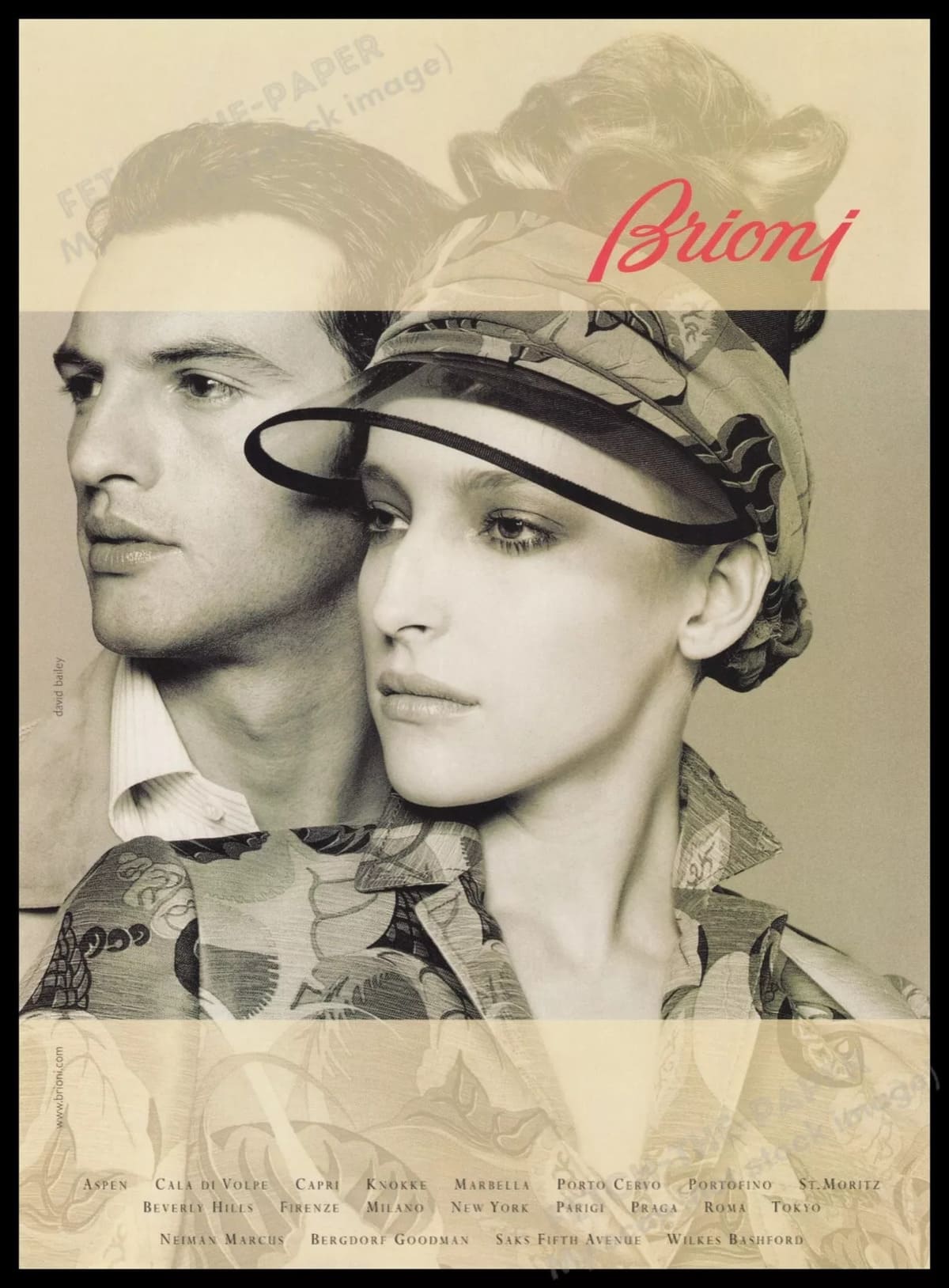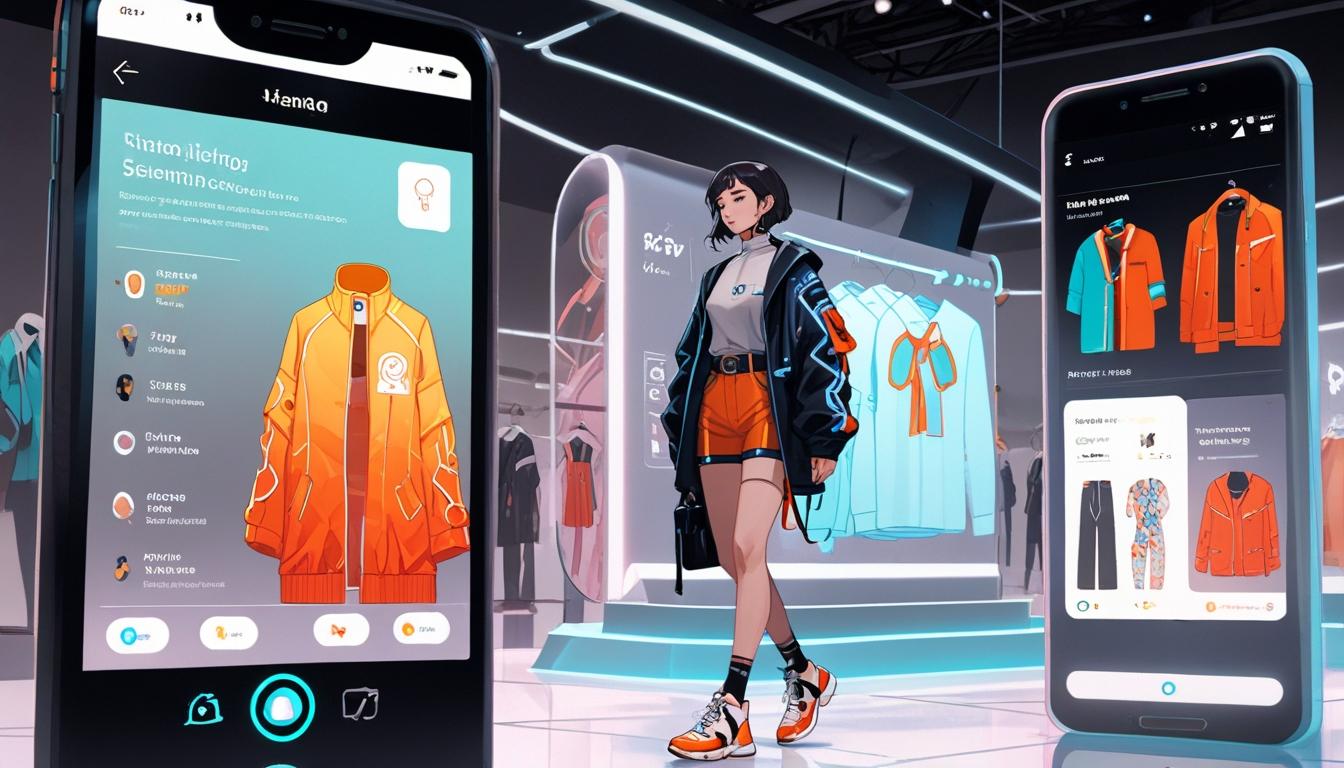Brioni, the epitome of Italian luxury menswear, has been synonymous with sartorial excellence since its founding in Rome in 1945. Renowned for its meticulous craftsmanship and elegant design, Brioni has carved a unique niche in the fashion world. From its inception by visionaries Nazareno Fonticoli and Gaetano Savini, the brand revolutionized men’s fashion by introducing bold colors and lighter materials, moving away from the conventional heavy fabrics and muted tones. This innovation set the stage for Brioni’s reputation as a pioneer in high-end menswear, a reputation that was further cemented with the staging of the first-ever menswear runway show in 1952 at the Palazzo Pitti in Florence.
The brand’s commitment to craftsmanship and innovation continued through the decades, marked by significant milestones that propelled its global influence. In the 1950s, Brioni became a favorite among Hollywood’s elite, with icons like Clark Gable, John Wayne, and Cary Grant donning its impeccably tailored suits. This era of glamour and sophistication established Brioni as the go-to brand for discerning gentlemen. The opening of the Scuola di Alta Sartoria in Penne in 1985 underscored the brand’s dedication to preserving its artisanal heritage, ensuring that the Brioni method of tailoring would be passed down to future generations.
The acquisition of Brioni by the luxury conglomerate Kering in 2011 marked a new chapter in the brand’s storied history. This transition brought fresh creative visions while retaining the timeless elegance that Brioni is known for. Today, under the leadership of CEO Mehdi Benabadji and creative direction of Norbert Stumpfl, Brioni continues to innovate while honoring its rich legacy. The brand’s logos and tags serve as historical markers, reflecting its evolution and helping aficionados identify true vintage pieces, each telling a story of the brand’s journey through fashion history.
Brad Pitt starring in Brioni Commercial
How to tell if Brioni is vintage from the logo
Brioni, known for its high-end menswear, particularly suits, has undergone various logo changes throughout its history. These changes reflect the brand’s evolution and can help identify whether a piece is vintage. The following sections detail the Brioni logos from different eras, allowing for easier identification of vintage Brioni items.
1986 to 2016 Brioni logo
- The logo features a cursive script that is both elegant and timeless.
- The color predominantly used during this period was red, exuding a classic and sophisticated look.
- This logo is characterized by its flowing, connected letters, making it highly recognizable.
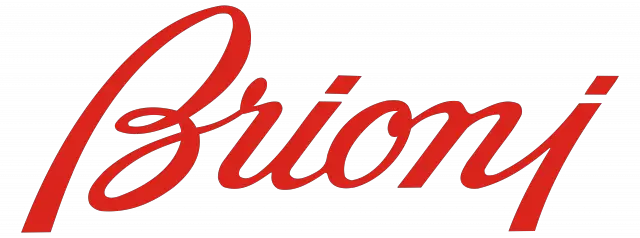
1986 to 2016 Brioni logo
2016 to now Brioni logo
- The logo retained the cursive script but changed the color to a black.
- The design remains similar to the previous era, maintaining the brand’s luxurious and elegant image.
- The red color adds a modern twist, making it stand out while still being true to Brioni’s identity.
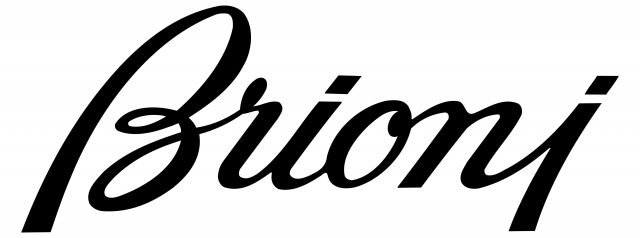
2016 to now Brioni logo
How to tell if Brioni is vintage from the tags
The evolution of Brioni tags reflects the brand’s rich history and its dedication to quality and craftsmanship. From the bold and classic designs of the 1970s to the more modern and sophisticated styles of the 2000s, each era’s tags provide a glimpse into the brand’s progression. By examining the details on these tags, one can determine the vintage nature of a Brioni garment.
Can’t identify those vintage tags or labels? Submit a picture on our vintage tag identification page, and we’ll help you out!
1970s vintage Brioni tags
- Often feature the “Brioni ROMAN STYLE” branding.
- Square or rectangular tags with bold serif lettering.
- Tags sometimes include partner tailor names or locations, such as “Wenborg Zurich.”
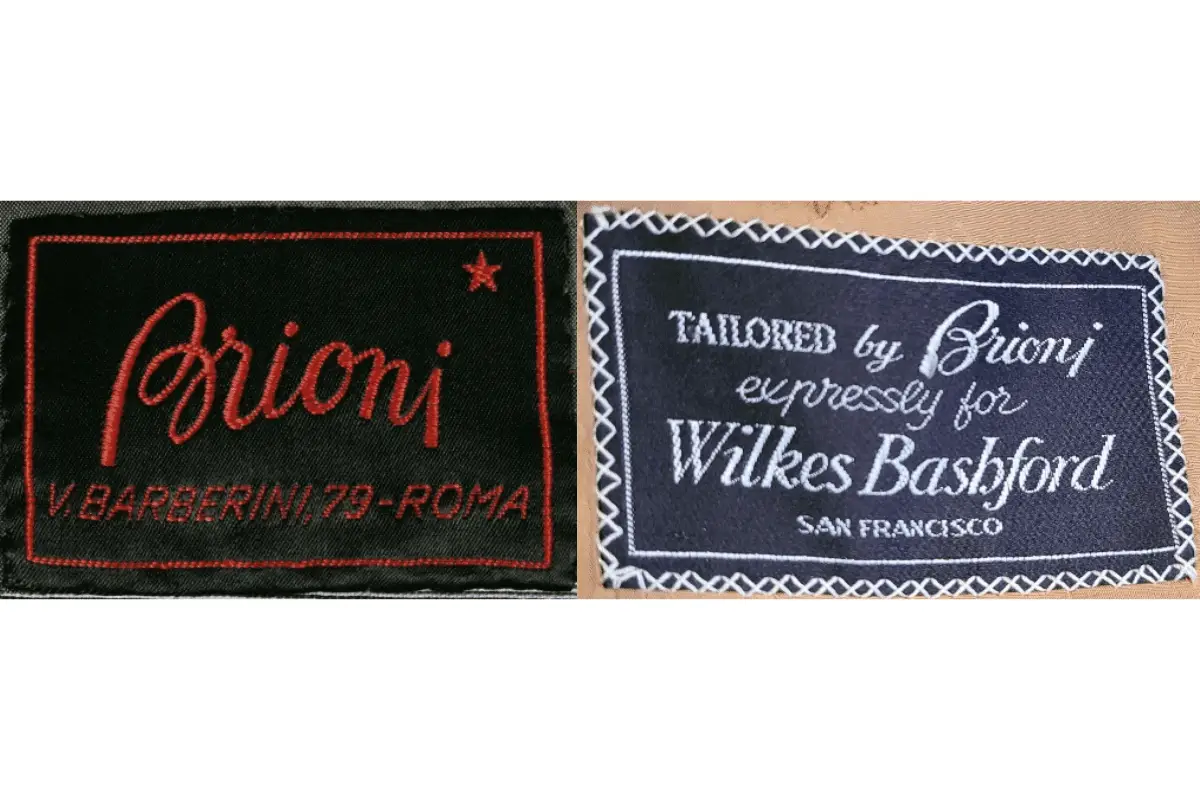
1970s Brioni tags
1980s vintage Brioni tags
- Shift to “Tailored in Italy by Brioni” branding.
- Square tags with intricate border designs.
- Tags often include additional details like “Expressly for” specific stores or tailors, such as “Krissann & Brisson” and “Junkers Bonn.”
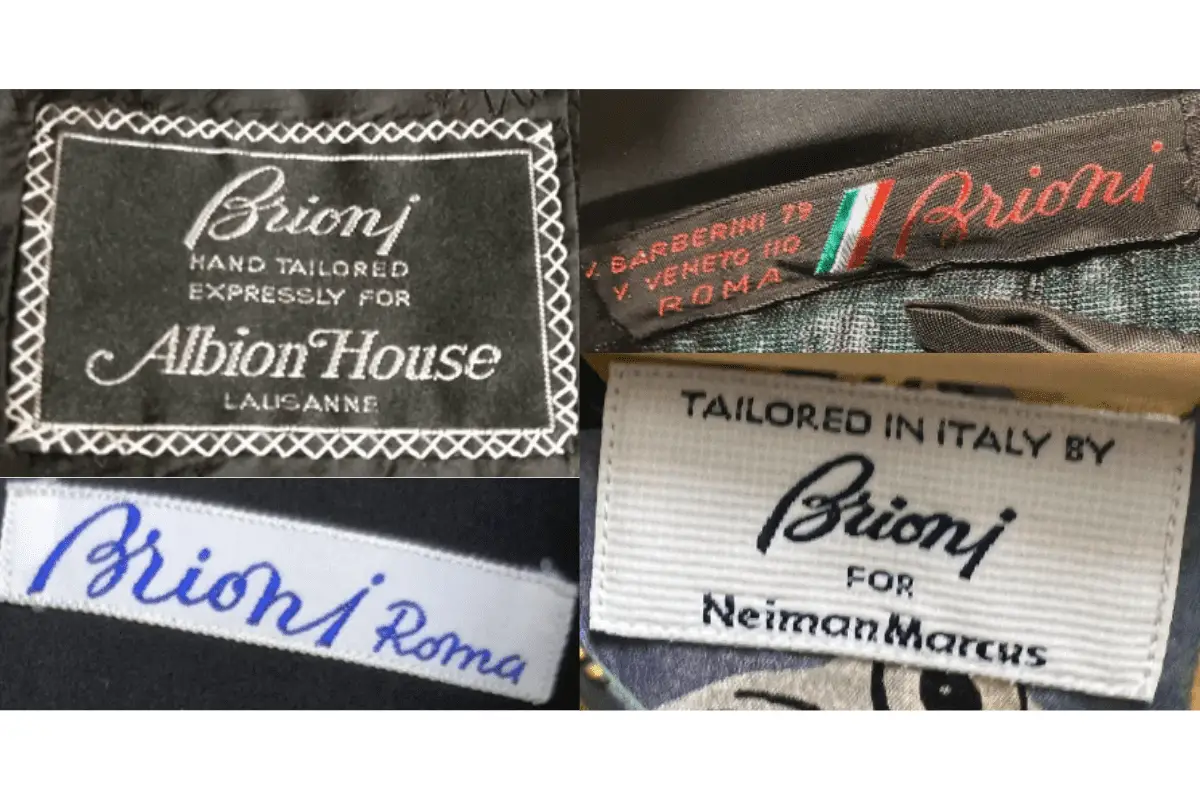
1980s Brioni tags
1990s vintage Brioni tags
- Tags start to feature simplified designs with just “Brioni ROMA.”
- Bold red lettering on a black background is common.
- Some tags continue to include detailed embroidery and elaborate designs for specific retailers, like “Wilkes Bashford.”
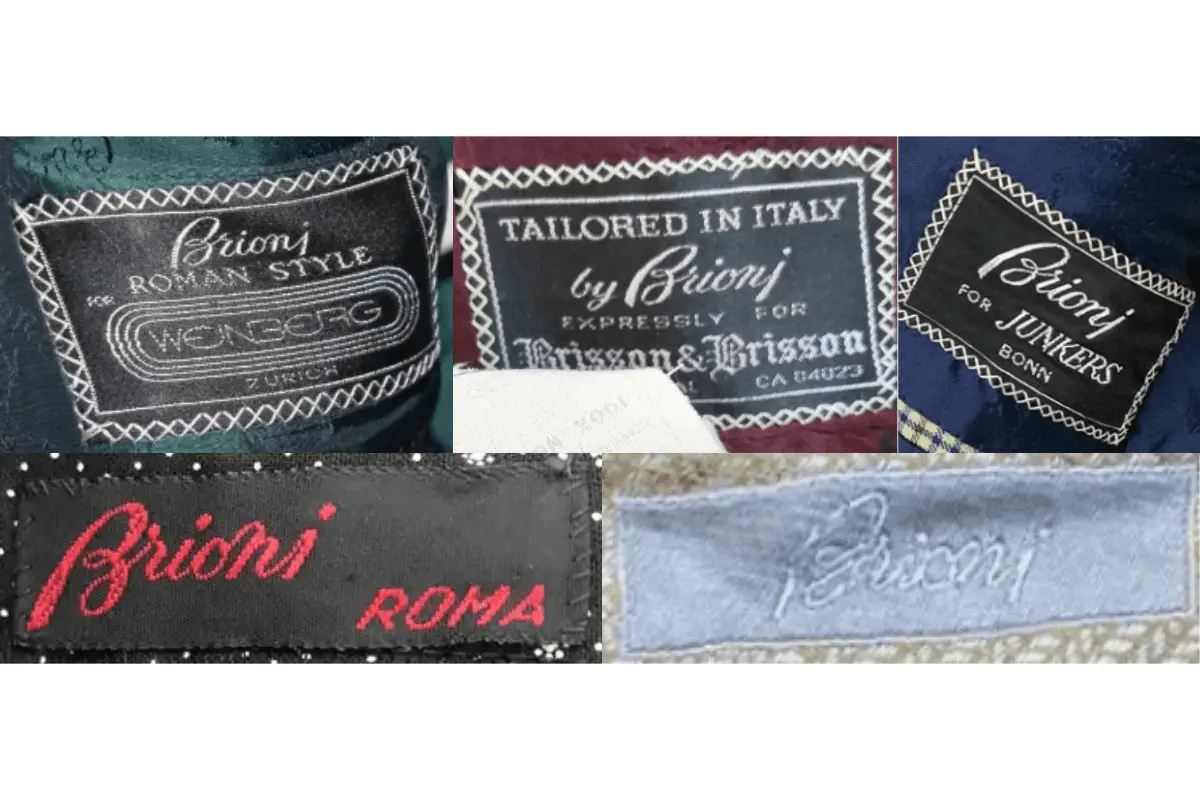
1990s Brioni tags
2000s vintage Brioni tags
- Introduction of modern, streamlined tag designs.
- Consistent use of the “Brioni” logo in various colors and styles.
- Tags often include the retailer or specific store names, such as “Neiman Marcus.”
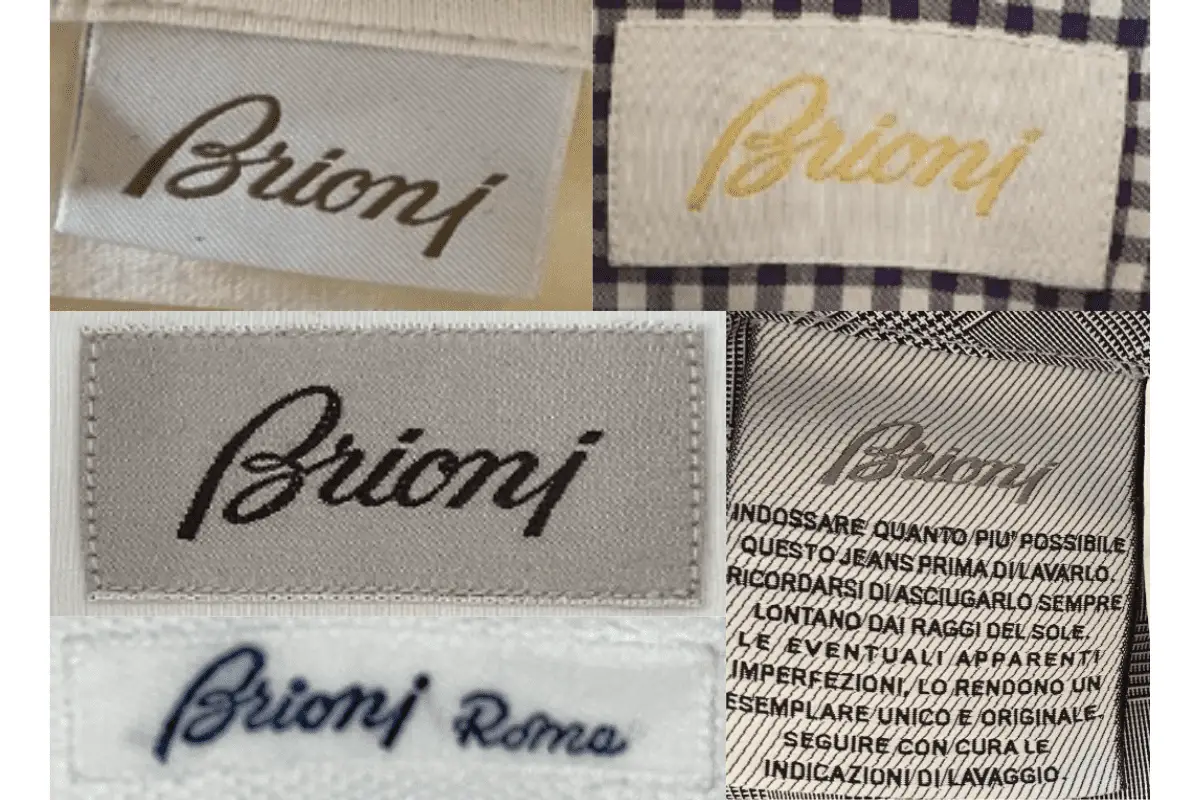
2000s Brioni tags
